Camping Out Under the Stars
I don’t do camping!” This is a well-worn cliché in my family. I love and appreciate the great outdoors as much as anyone, but sleeping under the stars is not high on my recreational list. For me, “roughing it” constitutes a stay at the Holiday Inn.
I have wondered if my aversion to sleeping under the stars is a consequence of God’s command to my people in Leviticus 23:42–43: “Ye shall dwell in booths [sukkot] seven days; all that are Israelites born shall dwell in booths.” During the Feast of Sukkot (Tabernacles), the Jewish people are supposed to “camp” under the stars for seven days. To properly understand the modern celebration, we must look at four elements: (1) the temporary dwelling, (2) the traditional species of plants, (3) the types of foods served, and (4) the thoughts of the people.
The Temporary Dwelling
The words tabernacle and booth are used to translate the Hebrew word sukkah. Tabernacle comes from the Latin word tabernaculum, meaning “hut, temporary dwelling.”1 For the Jewish people, a sukkah can be considered a temporary monument to the faithfulness
of God who fed and
led His people throughout their 40-year journey from Egypt into the Promised Land. He made sure that even their sandals did not wear out during that time. For this reason, the rabbis have called this feast Z’man Simchateinu—a time of great joy.
A particular irony accompanies a holiday that requires taking genuine pleasure in leaving bigger, better, and nicer homes to eat and sleep outside in smaller, simpler structures. Thus some call Tabernacles the Jewish Thanksgiving. And an attitude of thanksgiving is expected to fill every Jewish person who observes this feast.
The actual labor of building a sukkah is a mitzvah (good deed), but the timing of its assembly is just as important. Modern Judaism teaches that personal sins begin to accumulate immediately after Yom Kippur (Day of Atonement); so sukkah construction begins the next day. Any material can be used, but plywood and canvas seem to be the materials of choice. The sukkah must be sturdy enough not to blow down from an ordinary wind but, at the same time, never lose its temporary appearance. Each sukkah must have at least three walls, and each wall must be a minimum of 38 inches high but not exceed 30 feet high. One wall may be the permanent wall of a home or synagogue2.
The roof of a sukkah is referred to as s’chach, from the Hebrew verb root sachoch, meaning to “protect” or “cover.” The roof’s materials vary; but they must be grown from the ground, such as tree branches, shrubs, or straw. The covering must be able to provide more shade than sunlight inside the sukkah. To liven up the interior, such items as fruit, gourds, and even paper chains are hung from the roof. Pictures of the Holy Land are also common.
Most Jewish people in Israel live in flats, which are equivalent to condominiums in the United States. Attached to each flat is a railed porch, located outdoors off the kitchen. These porches make ideal sites for building sukkot.
If you strolled along these residential areas during the feast in Israel today, you would see hundreds of temporary dwellings climbing like vines up the sides of buildings, all the way to the top. In the United States, most Jewish people prefer to travel to their local synagogues or community centers to enjoy meals and fellowship in community sukkot. However, some people still build their own in their backyards. Today many companies even advertise and sell sukkah kits for just such a purpose.
When a family enters its sukkah for the first time, it extends an invitation for the ushpizim, the “guests,” to come in. Although family and friends certainly are welcome, they do not receive the invi- tation. The ushpizim are special; they are biblical guests— Abraham, Isaac, Jacob, Moses, Aaron, Joseph, and David.3 It is believed this invitation to our forefathers to enter the sukkah helps to fulfill all the potential of this last of the seven feasts.
Although it is true that sleeping under the stars is a Godgiven command, most people prefer just to eat their meals inside the structure. In the event of rain, the blessing over the wine and bread are recited before the meal; then everyone moves into a dryer, warmer, permanent place to eat. When the Sabbath arrives on Friday evening, the Sabbath candles are lit inside the sukkah. A special blessing is chanted on entering: “Praised be thou, O Lord our God, King of the universe, who has sanctified us with His commandments and commanded us to dwell in a tabernacle.”
Traditional Species (Arb’ah Minim)
Tradition teaches that a person receives “incredible spiritual blessings when he takes the four species.” Leviticus 23:40 identifies these species of plants for us:
And ye shall take you on the first day the boughs of goodly trees, branches of palm trees, and the boughs of thick trees, and willows of the brook; and ye shall rejoice before the LORD.
The first of these special items is called an etrog, a yellow fruit that grows on a citron tree. It is believed to be the lemon-like fruit from the “boughs of goodly trees.” A unique little nub called a pittom protrudes from the end of the most desirable variety of etrogim (plural of etrog). As the etrog grows, the pittom faces downward. It is the distinguishing feature of the etrog, and an etrog with a broken pittom usually is considered defective and unusable. Jewish tradition has taught that an etrog with a pittom symbolizes fertility because, among other reasons, the fruit is produced throughout the year.
The second of the four species is the lulav. The lulav is a branch from a date palm tree. According to the Apocrypha (extrabiblical books written during the second Temple period), it symbolizes victory. The book of Maccabees states, “they came to the fort in Jerusalem with praise and with date fronds and with lyres and with harps.”
The third species is the hadas (myrtle branch). (The name Hadassah comes from hadas.) It is a leafy branch that covers the trunk of the myrtle tree. Because it can withstand severe drought, it is regarded as a symbol of immortality and success.
The fourth is an aravah. It is a branch from a willow tree. Willow trees depend completely on water in order to flourish. Their branches wither within a day of cutting. In the days of Temple worship, people would pick tall willow tree branches and stand them upright around the altar, exclaiming, “Please God, save us; please give us great success.”
On Sukkot, lulav bouquets, each consisting of one date palm, three myrtle (hadasim) and two willow branches (aravot), are assembled. Rabbinic tradition compares these four species to four kinds of Jewish people.
The etrog, which possesses a good taste and sweet scent, symbolizes the Jew who possesses learning and performs good deeds. The aravah, which has neither good taste nor a pleasant scent, corresponds to the Jewish person who is deficient in both learning and good deeds. The lulav has a taste but gives off no scent, corresponding to the Jew who possesses learning but performs no good deeds. The myrtle possesses a scent but no taste, like the Jewish person who does good deeds but is ignorant.4
Each day for seven days, a designated person holds the etrog in his left hand and the lulav bouquet in his right hand. A prayer is recited: “Praised are You, Lord our God, ruler of the universe, who has made us holy with his commandments and commanded us concerning the waving of the lulav.” He then shakes the lulav in six directions: left, right, up, down, front, and back. This waving of the lulav is thought to bring the Jewish people closer to God and to remind them that He is everywhere.
Types of Foods
Sukkot falls in the middle
of Tishri (September-October), the time of the harvest. During this
month, evenings in
Israel can become a little
chilly. So the types of
foods served during the
feast are chosen carefully.
Hearty, hot dishes make welcome treats inside the sukkah. A popular dish is stuffed cabbage, made with cabbage, onions, garlic, celery, green and red peppers, and fresh dill—recently harvested. Borscht, a dark red soup made from beets, also is very popular. Besides beets, ingredients can include lemon, eggs, scallions, cucumbers, and sour cream—again from the harvest. Pumpkin pie is another favorite. Fresh fruits and nuts also are staples during this time. Many sukkot are decorated with apples, grapes, corn, and other recently harvested produce.
Thoughts of the People
The feast of Sukkot lasts seven days in Israel and eight days everywhere else. Two special days that immediately follow are usually regarded as a part of the feast. One is called Shiminei Atzeret (the eighth day of assembly) and the other, Simchat Torah (rejoicing in Torah). Simchat Torah marks and proclaims the completion of the regular, public Torah-reading cycle (conclusion of Deuteronomy) and the start of a new cycle in the book of Genesis. (The Torah is the Pentateuch only.)
Years ago I participated in this great celebration in our shul (synagogue). The Torah scrolls were taken from the ark and placed into the hands of congregants who joyously marched around the auditorium. Everyone sang and danced Hebrew folk dances as part of the festivities. Jewish people exhibit the same joy for the “harvest” of God’s Word as they do for the crop harvest. Both harvests provide sustenance; both come from above; both give satisfaction; and both are received with great joy.
What lessons can a believer in Yeshua Hamashiach glean from this Jewish feast? Several, I believe. First, just as Jewish families leave the comfort of their homes to dwell in temporary shelters under the stars, so, too, believers in Jesus Christ are reminded that this earth is not our home. It is but a temporary residence. We are ambassadors for Him while we dwell here. Sukkot should remind us not to grow comfortable in this world. Even now, He is preparing a permanent home for us with Him.
Second, as our Jewish friends shake the lulav bouquet in every direction to remind them that God is everywhere, we should ponder the same truth. It is good to remember that nothing is hidden from His sight. Third, when Jewish people eat hearty foods from the harvest, we should be mindful that the spiritual fields are white unto harvest. So many souls need to know the truth about God, so they can come to Him and be saved. Indeed, the harvest is plenteous; but the laborers are few. As the Jewish people end their cycle of Torah reading only to begin again, we should remember that nothing is hidden from His sight.
Third, when Jewish people eat hearty foods from the harvest, we should be mindful that the spiritual fields are white unto harvest. So many souls need to know the truth about God, so they can come to Him and be saved. Indeed, the harvest is plenteous; but the laborers are few.
As the Jewish people end their cycle of Torah reading only to begin again, we should remember that His Word is a lamp unto our feet and a light unto our paths (Ps. 119:105).
True, I never liked camping much. But I rejoice that God made it a priority for His Chosen People once a year. It is a wonderful privilege to gaze upward into the heavens—and remember Him.
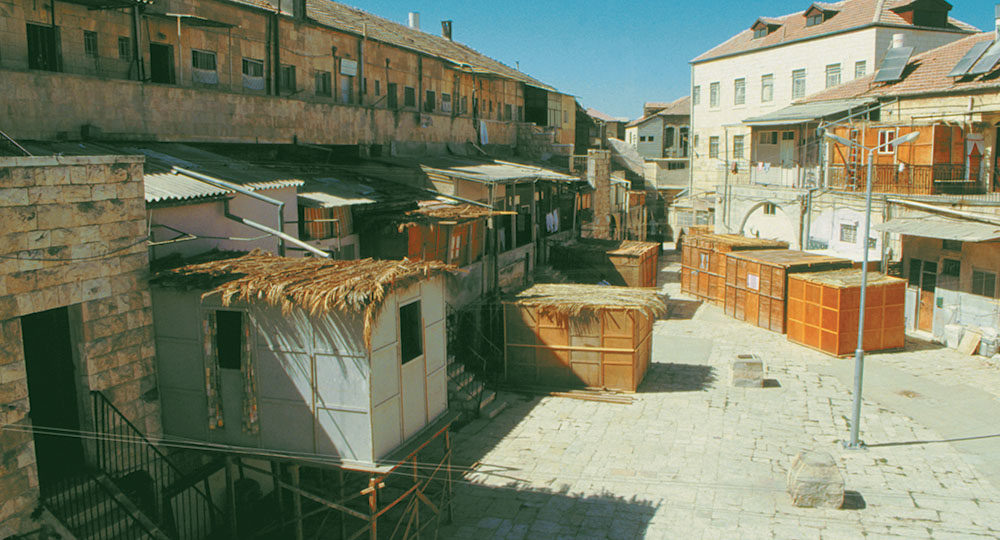

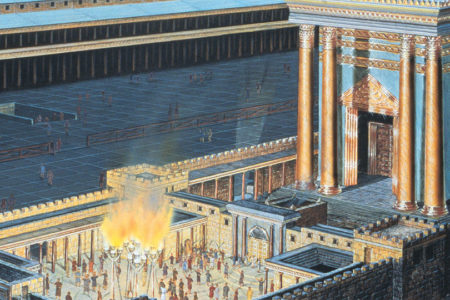
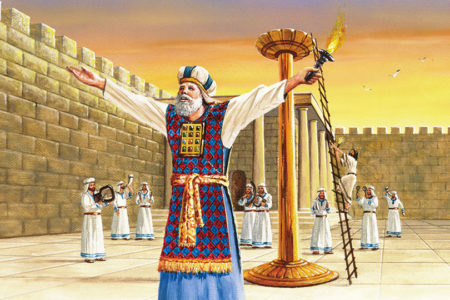
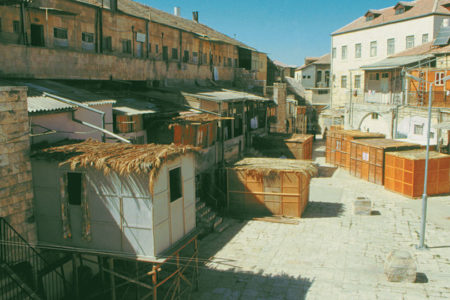
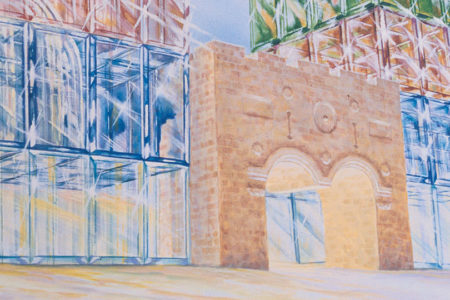

What a wonderful reminder of our father’s care and love for us.